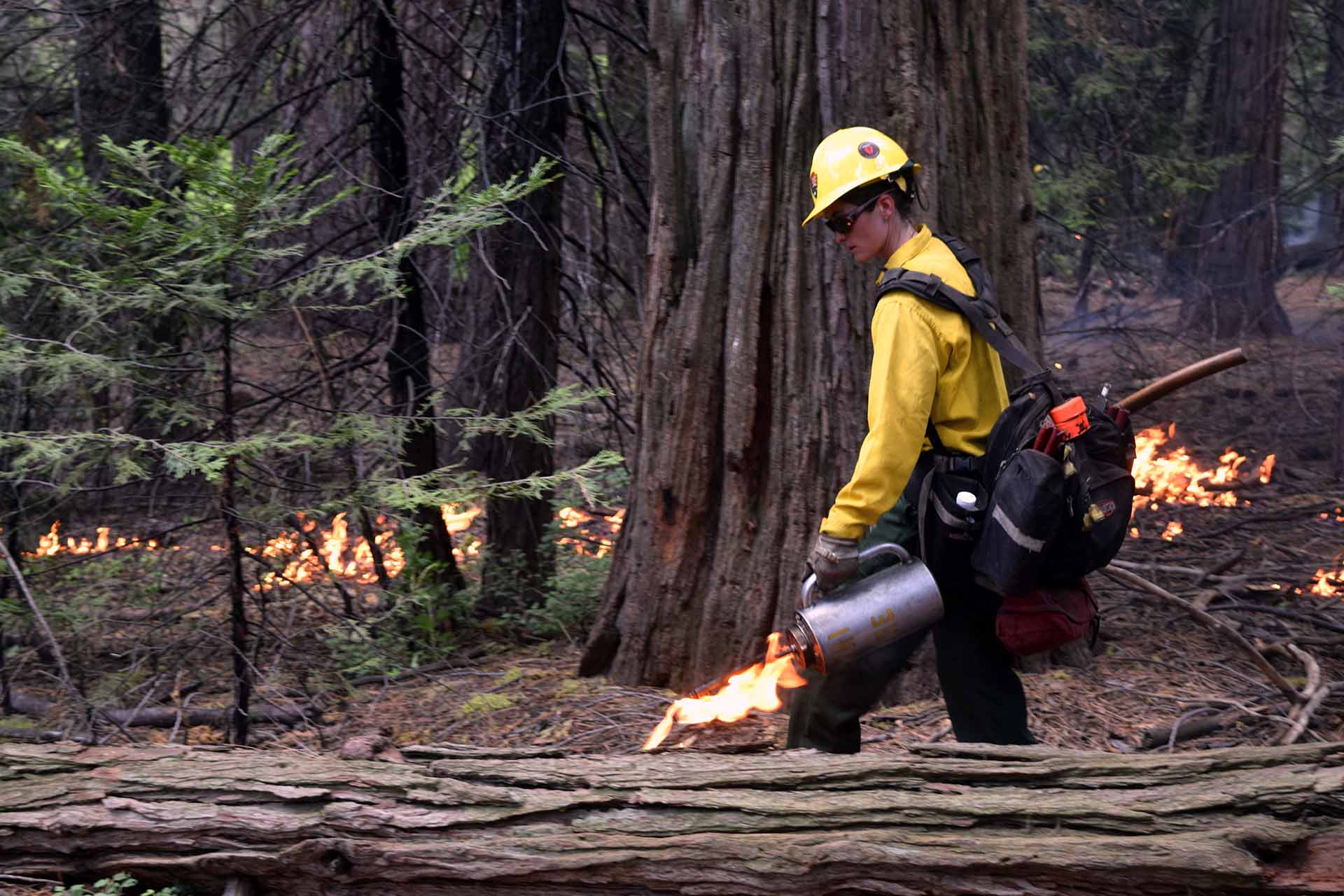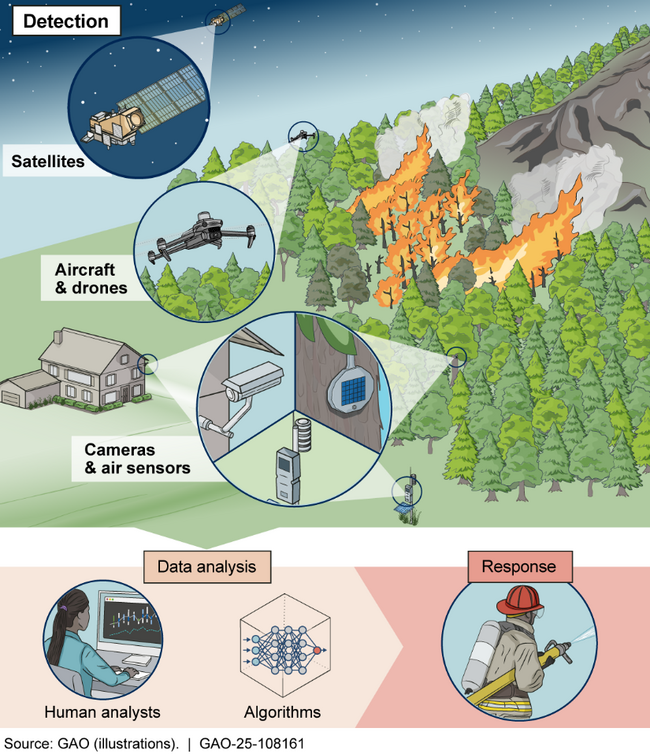Fuel Management

Reducing the amount of fuel in fire-prone areas through fuel treatments can slow the spread of fires, reduce their intensity, and make them easier to control. Fuel treatments include mechanical treatments and prescribed burns. Mechanical treatments may include forest thinning and harvesting, mowing, or moving fuels into piles. In a prescribed burn, fires are lit intentionally when fire conditions are mild, and fire removes hazardous fuels under controlled conditions.
References: RFF
Technology and Policy

Wildland fire managers, scientists and the public benefit from timely and easy to access information about current fire activity to provide information about potential risks and support suppression activities. NASA provides multiple sources of time sensitive satellite imagery and derived data products within the Fire Information for Resource Management System (FIRMS).
FIRMS is a web-based application with a dynamic mapping interface to visualize current and historical satellite imagery, active fire detections/hot spots and related science data products to identify the location, extent, and intensity of wildland fire activity and its effects.
References: EARTHDATA